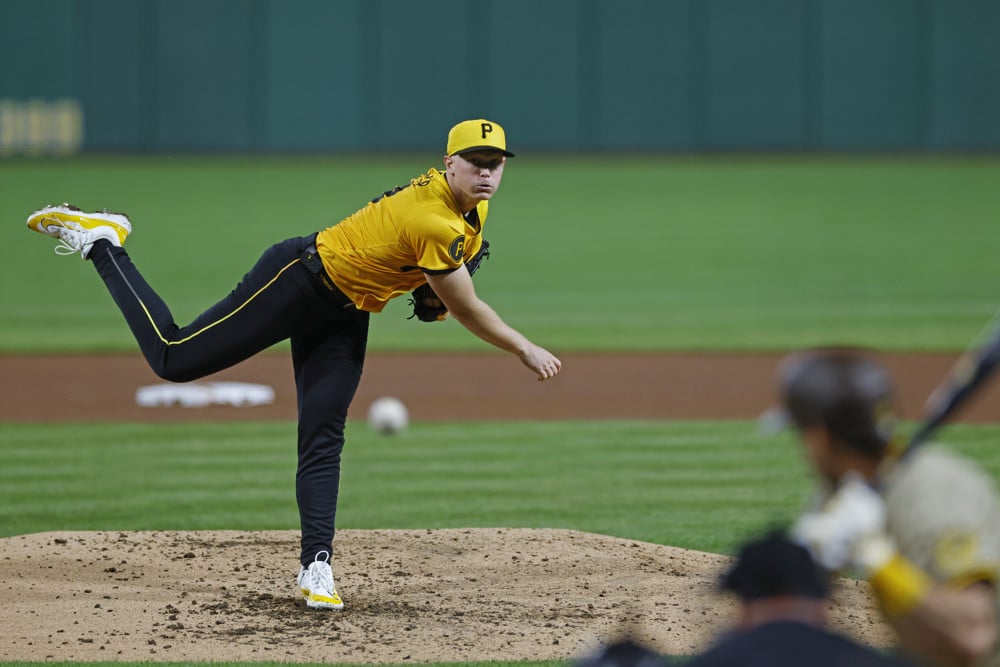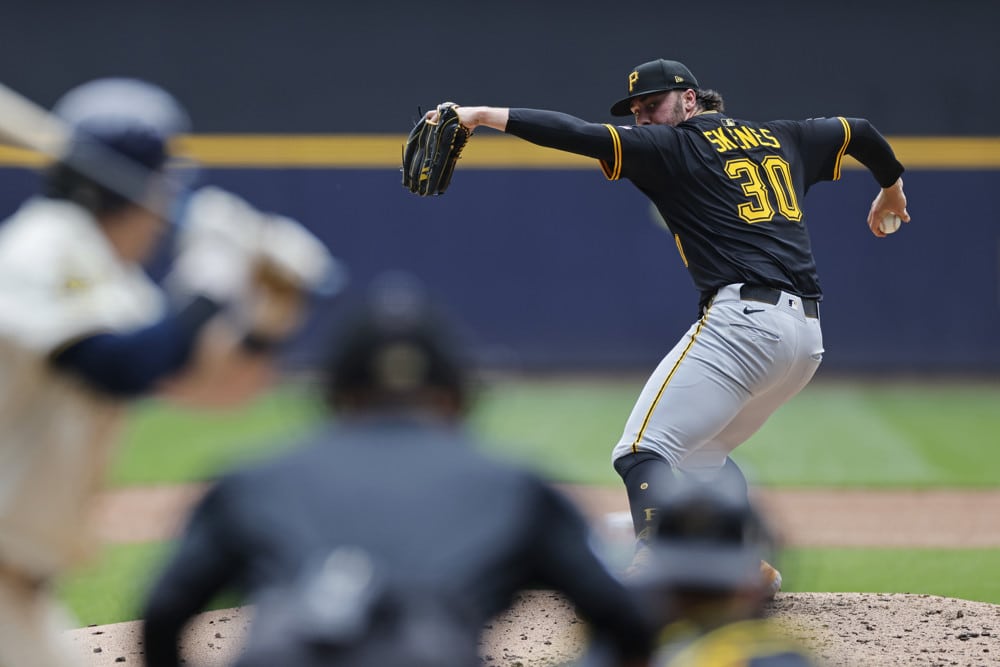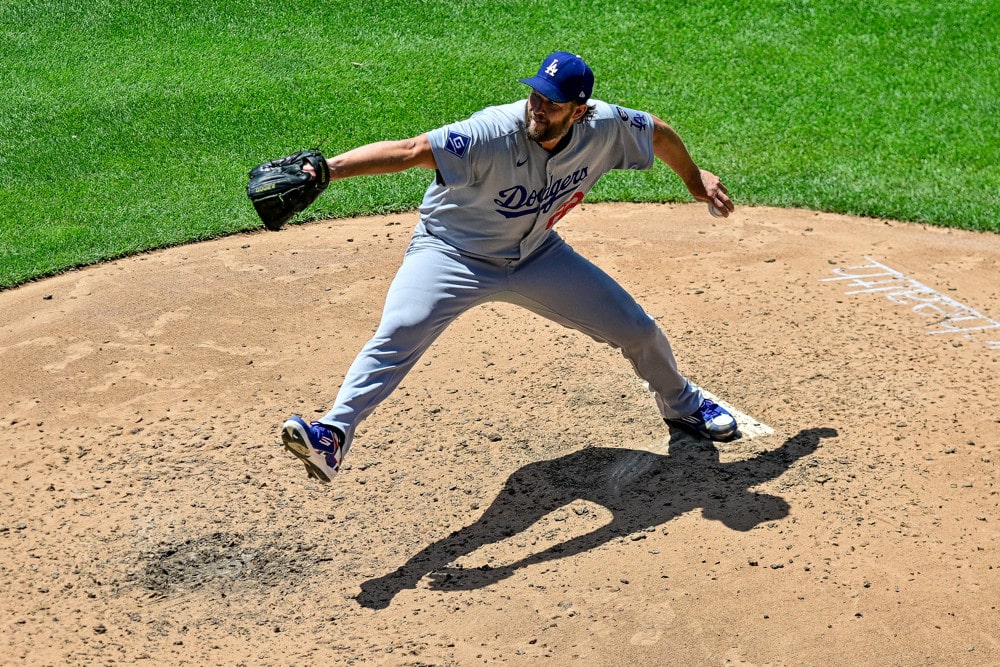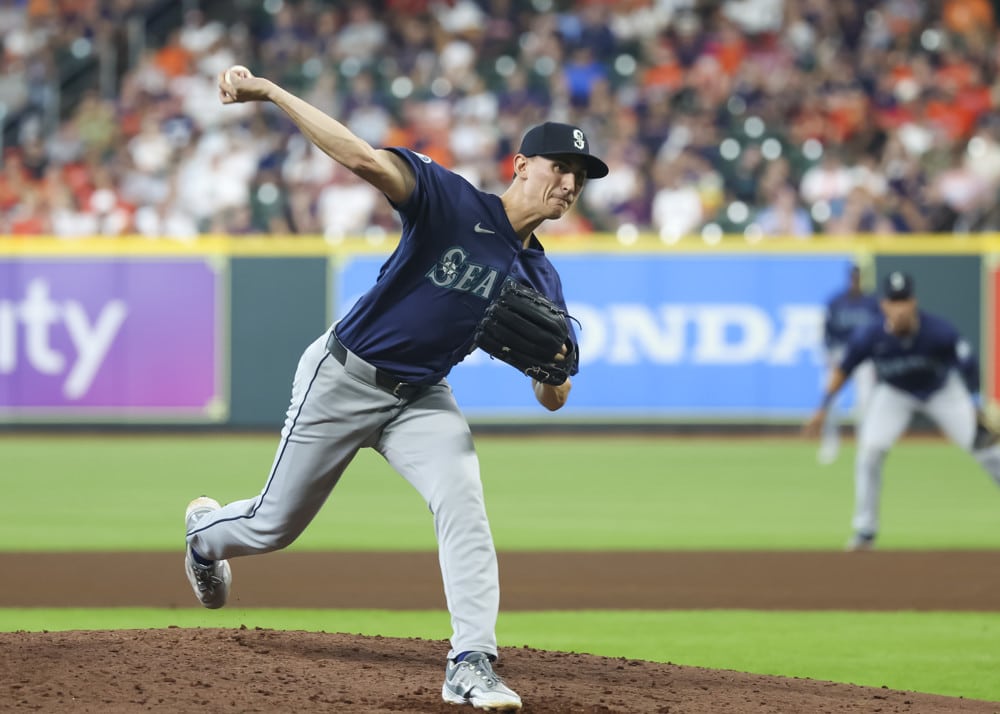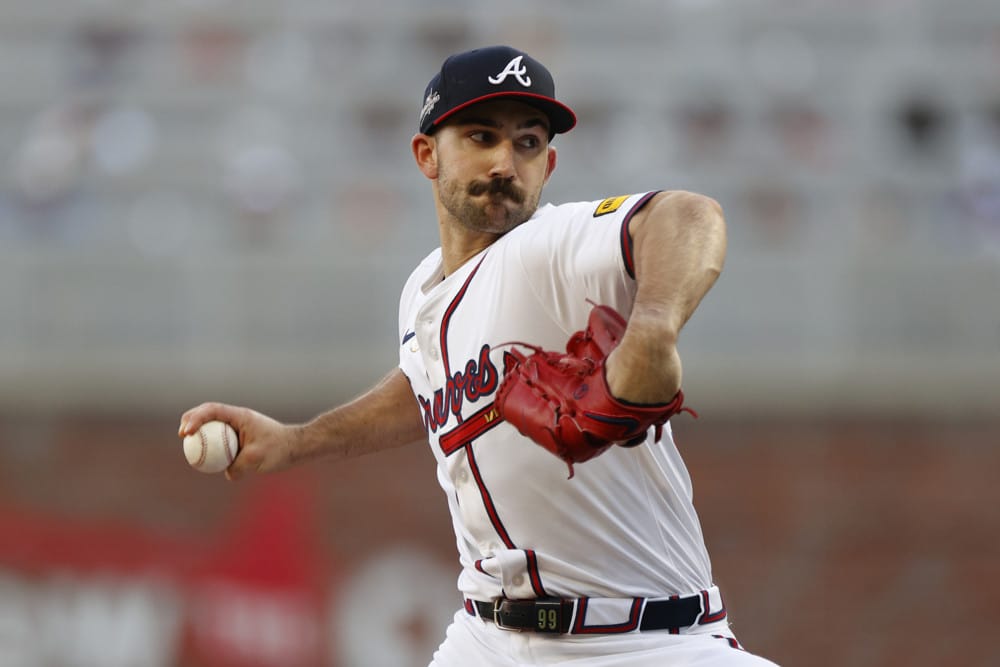
It’s the week we’ve all been waiting for. The granddaddy tournament of them all once again plays out at the illustrious Augusta National Golf Club. It’s the 2023 Masters, where a new Champion will be crowned. Who will wear the Green Jacket this year? Here’s a preview of the 2023 Masters and who it could be.
2023 Masters Preview – The Golf Course
Augusta National needs no long introduction. Even casual fans know the prominent holes, the traditional Sunday pin placements, and why Augusta National is considered one of the finest golf courses in the world.
For those who aren’t as familiar with Augusta National, or are looking for tips on how the best in the world attack it, here is a video from Golf.com narrating from 18 different Masters champions how they play each hole at Augusta National:
Augusta National carries significant weight in the golf world in setting both policy and standards. It also is keenly aware of the evolution of golf and how, specifically, technological innovations have changed the game. The club is always looking for ways to tweak the golf course so it can keep up with technological advancements.
In 2022, the golf course underwent several major changes. For a refresher on which changes were made to Augusta National, click here.
In 2023, the golf course underwent fewer changes overall. However, one change made has the golf world buzzing. Here’s what was done to Augusta National ahead of the 2023 Masters:
Lengthening of Hole No. 13
At long last, the 13th hole has been lengthened to combat rapidly increased driving distances. The Masters website has an overview of the rationale for why the club lengthened the iconic 13th. Click here to read that.
In 2023, the 13th will play at 545 yards. That’s 35 yards longer than the length it was in 2022. This was done by pushing back the 13th tee box after a purchase of land from Augusta Country Club in 2017.
There are several ramifications to this change. The first comes off the tee. In prior years, most players would opt to hit a three wood around the corner because it’s easier to draw that club instead of a driver. Or we’ve seen more ambitious players hit it over the corner to set up a short iron into the green, like what Bubba Watson did in 2014 en route to his second green jacket:
Cutting the corner is no longer possible in 2023. There is a very narrow chute directly in front of the new tee box that makes it impossible to try and hit a driver over it to shorten the hole. Not even Bryson DeChambeau at his peak would be able to do it. As such, everyone has to hit it dead straight toward the trees in the distance.
In addition, most players can now hit the driver off the tee. The tree line in the distance is about 325 yards away from the tee box. And considering the ball will land into an upslope, there’s little chance that a ball that carries 300-310 in the air will find its way into the pine trees.
However, anyone who can manage to hit a draw with their driver will be at a significant advantage. Players who block it right will lengthen the hole considerably and will most definitely need to lay up for their second.
Second, the approach shot is now significantly longer. Though players pulled three wood off the tee, their ability to work the ball right to left down the slope of the fairway often meant that longer hitters held seven, eight or nine iron into the green. Now even the longer hitters find themselves hitting five or six iron into the green, with shorter hitters hitting fairway metals.
The 13th won’t have an automatic green light to go for the green in two anymore. With the right weather conditions, anyone who can hold a long iron into the green will go for it. But in conditions where players are hitting into the wind, they’ll think twice to go for it in fear of coming up short and rolling the ball back into the tributary of Rae’s Creek.
In addition, the lengthening also might give comfort to shorter hitters who felt pressure to go for the green in two even if longer irons weren’t clubs they typically like to hit. A shorter player who has great confidence with their wedges from 100 yards and in might feel good about taking that strategy knowing that more (and inferior) players will be forced into that same option too.
While this change will make the hole harder, it should still play as one of the easiest holes on the golf course.
Other Changes
Here are a few other small changes made to Augusta National in 2023:
1. Per Patrick Cantlay on the No Laying Up podcast, the 7th green was completely redone. The 7th has been tweaked (in this writer’s opinion, negatively) over the years, and the green has once again been tweaked in 2023.
2. Per Patrick Cantlay on the No Laying Up podcast, the edges of the 4th green were also softened after years of bunker sand accumulating on the edges.
2023 Masters Preview – Betting Strategies
There is an abundance of data and history of The Masters available to gamblers. Almost too much. The high volume of course history, stats, and trends can feel a little overwhelming. Let’s simplify things for you this year and make sure you target the right things.
To start, here is the relative skillset chart from DataGolf of how much certain attributes are attributed to total strokes gained at The Masters (per DataGolf):
2023 Masters Preview – Relative Skill Set Chart
There are several skill sets that are highly correlated towards strong (or poor) performance in total strokes gained at the Masters. As Augusta National has been lengthened significantly over the years, so to as the importance of possessing length off the tee. As described below, Augusta National has turned into a contest of who can hit their mid to long irons the best. The ability to shorten up the proximity and have a high ball flight into tiny targets on firm green is a big edge.
That’s not to say a shorter hitter can’t have success. Zach Johnson famously won the 2007 Masters by laying up on every Par 5. And Matt Kuchar has good success at Augusta. However, with the recent changes to the golf course, particularly with the Par 5’s, their ability to keep up with the leaders is more and more difficult each year.
The lengthening of the golf course also has somewhat eliminated the necessity to hit the ball both ways or more specifically demand a player to hit the ball right to left. Because of how long the holes are now, a long and straight tee shot, regardless of curvature, will do just fine at Augusta National. And now that the hole most famous for demanding a sweeping right to left shot, the 13th, has been lengthened, that stereotype is now all but eliminated.
Next, better iron players tend to find more success at Augusta National than poorer ones. This is for two reasons. First, the targets on the greens are very small, and missing the mark by mere feet can make the difference between an excellent shot and a mediocre one. With how severely undulated the greens are, precise iron play can unlock the ability to pile on birdies. Loose iron play eliminates the ability for good looks at birdie, as well as the threat of carding sloppy bogeys.
Second, the stronger iron players on the PGA Tour tend to be those who excel with their long irons. And as mentioned a few paragraphs up, Augusta National asks players to hit long approach shots over and over again. Here is the approach shot distribution chart from the 2022 Masters, which is similar to prior Masters (per DataGolf):
70% of all approach shots into the greens at Augusta National come from over 150 yards. They include all four Par 3’s, ideally all the Par 5’s (unless one makes a Par 5 a three shot hole), and five of 10 of the Par 4’s. As such, premium iron players who excel from over 150 yards are the ones to target on the betting card and in DFS lineups.
But of all the skillsets, what truly separates a contender and pretender at Augusta National is the short game. Especially when the weather makes ball striking difficult (such as cold or windy conditions), the ability to save strokes by getting up and down is vital to keeping up with the rest of the leaders.
And getting up and down at Augusta National is no cakewalk. Chipping off of tight lies onto fast, firm, and undulating greens carries a significant degree of difficulty. While not impossible, there is a very fine line between an excellent chip or bunker shot onto a green and a poor one. And the ability to use the slopes creatively to one’s advantage to get the ball close to the hole is a huge plus at Augusta National.
There’s also a slight correlation towards good putters having more success at Augusta. But it’s not required. There are examples of poor putters who happen to have found success at Augusta National. They include Will Zalatoris, Collin Morikawa, Corey Conners, and Hideki Matsuyama. Their significant advantage in ball striking can overcome shaky putting. And there’s evidence to suggest the fast and undulating greens bring them closer to the above average putters.
2023 Masters Preview – Tournament Experience
Everyone always says that experience matters at Augusta National. But until recently, one couldn’t really quantify it. Like always, DataGolf explored the topic and gave the world the answers:
DataGolf provided a chart of strokes gained per round, categorized by previous Masters appearances. While showing that, yes, more experience at the Masters helps, this graph also identifies certain jumps in performance at certain points of one’s career.
Per this chart, one experiences significant jumps in performance in their 3rd, 7th, and 9th Masters. One peak at the Masters in their 9th appearance and continues to enjoy sustained success up through their 13th appearance. And after 13 appearances, one’s performance begins to decline dramatically, primarily due to aging out as a competitive golfer. Those who can extend their shelf life, however, can remain competitive at Augusta National well into their 40s.
Here is a list of what appearance number of recent Masters winners who won the Green Jacket:
- 2022: Scottie Scheffler – 3rd Start
- 2021: Hideki Matsuyama – 10th start
- 2020: Dustin Johnson – 10th start
- 2019: Tiger Woods – 22nd start
- 2018: Patrick Reed – 5th start
Here are some players in this year’s field who are about to embark on a milestone Masters appearance:
3rd Masters Appearance
- Will Zalatoris
- Scott Stallings
7th Masters Appearance
- Jon Rahm
- Cameron Smith
- Patrick Cantlay
- Tommy Fleetwood
- Bryson DeChambeau
- Keegan Bradley
- Si Woo Kim
- Russell Henley
9th Masters Appearance
- Matthew Fitzpatrick
- Billy Horschel
- Danny Willett
2023 Masters Preview – Weather Forecast
No golf course changes as much in different weather conditions than Augusta National. In pristine weather conditions, birdies are plentiful. But when the weather turns, Augusta National gets really mean.
Historically, the following creates the best scoring conditions at Augusta National:
- Temperatures above 80 degrees
- Humid, muggy conditions
- Soft conditions, especially immediately after rainfall
- Low wind from an easterly or southerly direction.
In these conditions, the ball flies off the club face. Any amount of moisture, whether it be via recent rainfall or humidity, makes the greens just enough receptive to allow for firing at pins. And low winds from the east or the south provide the best scoring conditions. These winds either don’t impede the ball flight, or it may provide a helping wind, on the Par 5 13th and 15th. It’s absolutely vital to score on these holes at Augusta National.
The following creates the worst scoring conditions at Augusta National:
- Temperatures below 70 degrees.
- Low humidity and dry atmospheric conditions
- Lack of rainfall to create a firm playing surface
- High winds from a northerly or westerly direction.
In these conditions, balls struggle to stay in the air. The lack of moisture, either from rainfall or low humidity, makes the greens rock hard and unreceptive. And high winds from the north or west provide for the stiffest test. From this direction, 13 and 15 play more into the wind to make it difficult to get home in two. And with west winds, balls are pushed towards “Death Bunker” on the long Par 4 5th, one of the toughest holes on the golf course.
Gamblers need to factor in all of these conditions to gauge how scoring will be at the upcoming Masters.
Since 2007, here are the scoring averages with various weather conditions at the Masters:
Temperatures (Daily High)
- < 70 Degrees – 74.5
- 70-75 Degrees – 72.7
- 75-80 Degrees – 72.9
- >80 Degrees – 72.7
Wind – Average Sustained and Gusts
- <10 MPH – 72.5
- 10-15 MPH – 73.1
- 15+ MPH – 74.2
Wind Direction
- Northerly – 73.6
- Easterly – 72.5
- Southerly – 73.1
- Westerly – 73.7
Humidity
- <50%: 73.9
- 50-60%: 73.0
- 60+%: 72.5
Rainfall During Tournament
- >0.1 inches – 72.8
- <0.1 inches – 73.3
Per Accuweather, here is the tentative forecast for Thursday through Sunday during the 2023 Masters. This will help preview what type of scores and cut lines to expect:
Thursday: Cloud cover, very warm and humid with a thunderstorm. High 85. SSW wind 6-15 MPH. 80% chance of precipitation. 0.1 inches of rain expected. 67% average humidity
- Projected Round 1 Scoring Average: 72.3
Friday: Cloudy and cooler with a couple of thunderstorms. High 68. NE wind 10-24 MPH. 88% chance of precipitation. 0.32 inches of rain expected. 74% average humidity
- Projected Round 2 Scoring Average: 73.6
- Projected Cut: +1/+2
Saturday: Cloudy and cooler with a thunderstorm. High 59. NE wind 13-22 MPH. 60% chance of precipitation. 0.28 inches of rain expected. 78% average humidity
- Projected Round 3 Scoring Average: 73.7
Sunday: Cloudy with a couple of showers and a thunderstorm. High 66. ENE wind 7-18 MPH. 60% chance of precipitation. 0.2 inches of rain expected. 71% average humidity
- Projected Round 4 Scoring Average: 72.9
Given the significant threat of thunderstorms every day of the tournament, a Monday morning finish isn’t out of the question. Here’s the Monday morning forecast in case the final round ends a day late:
Monday: Mostly cloudy with a thunderstorm. 68 degrees. W wind 4-9 MPH. 55% chance of precipitation. 0.05 inches of rain is expected. 66% humidity
- Projected Monday Morning Scoring Average: 72.9
Since 2015, the winner of the Masters has gained about four strokes per round on the field. As such, the projected winning score of the Masters, based on the projected round to round scores above, is -11 (277). Scoring conditions should be favorable on Thursday and Sunday/Monday morning to allow players to record a pretty low round. Saturday and Sunday, however, look like tough scoring conditions. That should keep the winning score in the low teens under par.
2023 Masters Preview – Form Coming In
In retrospect, there are not a ton of surprising names who have won the Masters over the last decade. Save for Danny Willett or Hideki Matsuyama, almost every winner of the Masters since 2011 has come into the Masters in excellent form.
Here are some minimum benchmarks from certain strokes gained areas that each winner of the Masters since 2012 has achieved:
Tee-to-Green – From the Sentry Tournament of Champions through the start of the Masters, every champion gained at least 0.73 or more strokes per round tee-to-green on the field.
Off the Tee – From the Sentry Tournament of Champions to the start of the Masters, no champion was losing strokes per round off the tee.
Approach – From the Sentry Tournament of Champions to the start of the Masters, no champion was losing strokes per round with their irons. In addition, every champion from the Sentry Tournament of Champions through the start of the Masters was gaining at least 0.23 strokes per round on the field.
Around the Green – From the Sentry Tournament of Champions to the start of the Masters, no champion was losing strokes per round around the green. In addition, every champion from the Sentry Tournament of Champions through the start of the Masters was gaining at least 0.12 strokes per round on the field.
SG ARG + Approach: Every champion from the Sentry Tournament of Champions to the start of the Masters was gaining a combined 0.61 or more strokes per round on the field with their approach shots and around the green.
Furthermore, every champion since 2012 has had at least one Top 10 at a prior major championship, and eight of 11 had a Top 10 in the year prior to the win. The exceptions were Hideki Matsuyama, a battle tested veteran with lots of close calls at majors prior to winning the Masters. The other was Bubba Watson, who was battle tested based on his playoff loss to Martin Kaymer at the 2010 PGA, and then later with his previous win at Augusta.
Follow the tips in this preview, and a gambler should put together a solid 2023 Masters DFS lineup and betting card.








